-
 Bitcoin
Bitcoin $84,412.2676
-0.67% -
 Ethereum
Ethereum $1,578.6729
-0.92% -
 Tether USDt
Tether USDt $0.9997
-0.03% -
 XRP
XRP $2.0641
-1.56% -
 BNB
BNB $590.2565
1.09% -
 Solana
Solana $133.1528
3.43% -
 USDC
USDC $1.0000
0.01% -
 TRON
TRON $0.2486
-2.49% -
 Dogecoin
Dogecoin $0.1551
-0.16% -
 Cardano
Cardano $0.6195
1.38% -
 UNUS SED LEO
UNUS SED LEO $9.0448
-3.89% -
 Chainlink
Chainlink $12.4389
0.95% -
 Avalanche
Avalanche $19.1160
0.32% -
 Toncoin
Toncoin $2.9801
3.00% -
 Stellar
Stellar $0.2386
1.48% -
 Shiba Inu
Shiba Inu $0.0...01174
-0.95% -
 Sui
Sui $2.1028
0.11% -
 Hedera
Hedera $0.1609
1.18% -
 Bitcoin Cash
Bitcoin Cash $334.5478
3.76% -
 Polkadot
Polkadot $3.6383
2.11% -
 Litecoin
Litecoin $75.0599
-0.04% -
 Hyperliquid
Hyperliquid $16.5153
3.75% -
 Dai
Dai $1.0001
0.01% -
 Bitget Token
Bitget Token $4.3581
0.06% -
 Ethena USDe
Ethena USDe $0.9991
0.00% -
 Pi
Pi $0.6183
-0.05% -
 Monero
Monero $216.0344
-1.40% -
 Uniswap
Uniswap $5.1688
-0.28% -
 OKB
OKB $50.4625
-2.46% -
 Pepe
Pepe $0.0...07178
0.05%
Is USDT subject to government supervision?
USDT's regulation varies globally, with Tether Limited facing scrutiny but not direct SEC oversight, impacting its role in crypto markets and DeFi ecosystems.
Apr 09, 2025 at 05:01 am

The question of whether Tether (USDT), one of the most widely used stablecoins, is subject to government supervision is complex and multifaceted. USDT is designed to maintain a stable value by being pegged to the US dollar, and its issuer, Tether Limited, claims that each USDT token is backed by an equivalent amount of fiat currency held in reserve. However, the extent to which USDT is regulated and supervised by government bodies varies across jurisdictions and has been a topic of much debate and scrutiny within the cryptocurrency community.
Regulatory Framework for USDT
USDT operates in a regulatory gray area, as the cryptocurrency industry is still evolving and many countries have not yet established comprehensive regulations specifically targeting stablecoins. In the United States, Tether Limited is not registered with the Securities and Exchange Commission (SEC) as a money transmitter, which has raised concerns about the transparency and accountability of its operations. The Commodity Futures Trading Commission (CFTC) has taken actions against Tether in the past, but these have been more related to the broader crypto market rather than specific oversight of USDT.
USDT's Compliance Efforts
Tether Limited has taken steps to improve its compliance with regulatory requirements. The company has engaged with various regulatory bodies and has attempted to address concerns about the backing of USDT. For instance, Tether has published periodic attestations from independent auditors to verify the reserves backing USDT. However, these attestations have been criticized for lacking the rigor and transparency of a full audit, leading to ongoing debates about the true extent of USDT's backing.
International Regulatory Perspectives
Outside the United States, the regulatory landscape for USDT varies significantly. In the European Union, stablecoins like USDT fall under the scope of the Markets in Crypto-Assets (MiCA) regulation, which aims to create a harmonized regulatory framework for crypto-assets. However, MiCA is still in the process of being implemented, and its impact on USDT remains to be seen. In Asia, countries like Japan and Singapore have more developed regulatory frameworks for cryptocurrencies, but these do not necessarily translate into direct supervision of USDT.
Challenges in Regulating USDT
One of the main challenges in regulating USDT is its decentralized nature. While Tether Limited is the issuer, USDT transactions occur on various blockchain networks, making it difficult for any single government to exert full control. Additionally, the anonymity and speed of cryptocurrency transactions complicate efforts to monitor and regulate USDT effectively. This has led to calls for international cooperation and the development of global standards for stablecoin regulation.
Impact of Regulatory Actions on USDT
Regulatory actions against USDT have had varying impacts on its market position and user confidence. For example, when the New York Attorney General's office reached a settlement with Tether Limited in 2021, it resulted in increased scrutiny and calls for more transparency. However, USDT has continued to be widely used, suggesting that regulatory actions have not significantly diminished its utility or market dominance. The resilience of USDT in the face of regulatory challenges underscores the complexity of regulating stablecoins within existing financial frameworks.
Future of USDT Regulation
The future of USDT regulation will likely depend on the evolution of broader cryptocurrency regulations. As governments around the world continue to grapple with the implications of digital currencies, there may be increased pressure to establish clear guidelines for stablecoins. Tether Limited's ability to adapt to these changing regulatory landscapes will be crucial in determining the long-term viability of USDT. Additionally, the rise of alternative stablecoins with more transparent backing and regulatory compliance may challenge USDT's market position.
USDT's Role in the Cryptocurrency Ecosystem
USDT plays a significant role in the cryptocurrency ecosystem, serving as a bridge between traditional fiat currencies and digital assets. It is widely used for trading, remittances, and as a store of value within the crypto market. The stability of USDT is crucial for the functioning of many decentralized finance (DeFi) platforms, which rely on stablecoins to facilitate lending, borrowing, and other financial services. The regulatory oversight of USDT, therefore, has broader implications for the stability and security of the entire cryptocurrency ecosystem.
Public Perception and Trust in USDT
Public perception and trust in USDT are influenced by its regulatory status and the transparency of its operations. Despite ongoing concerns about the backing of USDT, it remains one of the most trusted stablecoins due to its widespread adoption and liquidity. However, any significant regulatory action or failure to meet reserve requirements could erode this trust. As such, maintaining a positive relationship with regulatory bodies and ensuring transparency will be essential for Tether Limited to sustain confidence in USDT.
Case Studies of Regulatory Actions on USDT
Several case studies illustrate the impact of regulatory actions on USDT. In 2019, the New York Attorney General's office filed a lawsuit against Tether Limited and Bitfinex, alleging that the companies had engaged in fraudulent activities. The settlement of this lawsuit required Tether to provide more transparency about its reserves. Another case involved the CFTC's settlement with Tether in 2021, which highlighted the need for better compliance with anti-money laundering (AML) and know-your-customer (KYC) regulations. These cases demonstrate the ongoing tension between regulatory authorities and Tether Limited.
Technological Solutions for USDT Regulation
Technological solutions may play a role in enhancing the regulation of USDT. Blockchain analytics tools can help track USDT transactions and identify suspicious activities, aiding regulatory efforts to combat money laundering and other financial crimes. Additionally, the development of decentralized stablecoins with transparent on-chain collateral could provide an alternative to USDT, potentially leading to increased regulatory scrutiny of Tether Limited. The integration of these technologies into regulatory frameworks could improve oversight of USDT and other stablecoins.
Market Dynamics and USDT
Market dynamics also influence the regulatory landscape for USDT. As the demand for stablecoins grows, regulatory bodies may feel pressure to establish clearer guidelines to protect consumers and maintain financial stability. The competition between different stablecoins can also drive regulatory changes, as issuers seek to differentiate themselves through compliance and transparency. The interplay between market forces and regulatory actions will continue to shape the future of USDT and its role in the cryptocurrency ecosystem.
Community and Industry Perspectives on USDT Regulation
The cryptocurrency community and industry stakeholders have varied perspectives on the regulation of USDT. Some advocate for stricter oversight to ensure the stability and integrity of the market, while others argue that excessive regulation could stifle innovation. Industry leaders have called for a balanced approach that protects consumers without hindering the growth of the cryptocurrency sector. The ongoing dialogue between regulators, industry participants, and the broader community will be crucial in shaping the regulatory environment for USDT.
Legal Challenges and USDT
Legal challenges have been a recurring theme in the regulation of USDT. Lawsuits and regulatory actions against Tether Limited have highlighted the complexities of applying existing legal frameworks to stablecoins. These legal battles have often focused on issues such as the transparency of USDT's reserves, compliance with AML and KYC regulations, and the broader implications for financial stability. The outcomes of these legal challenges could set important precedents for the regulation of stablecoins and influence the future trajectory of USDT.
Global Coordination in Regulating USDT
Global coordination is essential for effectively regulating USDT, given its international use and the decentralized nature of cryptocurrency transactions. International bodies such as the Financial Action Task Force (FATF) have issued guidelines for regulating virtual assets, which could impact the oversight of USDT. However, achieving consensus on a global regulatory framework for stablecoins remains challenging due to differing national interests and regulatory priorities. Enhanced international cooperation could lead to more consistent and effective regulation of USDT across different jurisdictions.
Economic Implications of USDT Regulation
The regulation of USDT has significant economic implications for the cryptocurrency market. Stricter oversight could increase the cost of compliance for Tether Limited, potentially affecting the issuance and circulation of USDT. Conversely, clearer regulatory guidelines could enhance the stability and credibility of USDT, attracting more institutional investors and increasing its utility in financial transactions. The economic impact of USDT regulation will depend on the balance between ensuring market integrity and fostering innovation within the cryptocurrency sector.
Consumer Protection and USDT
Consumer protection is a key consideration in the regulation of USDT. Regulatory bodies aim to safeguard users from potential risks associated with stablecoins, such as the loss of funds due to inadequate backing or fraudulent activities. Ensuring that USDT is subject to appropriate oversight can help protect consumers and maintain trust in the cryptocurrency market. However, achieving effective consumer protection without stifling innovation remains a challenge for regulators and industry participants alike.
USDT and Financial Stability
The regulation of USDT also has implications for financial stability. As a widely used stablecoin, USDT can influence liquidity and price stability within the cryptocurrency market. Regulatory actions that affect the issuance or circulation of USDT could have ripple effects on the broader financial system. Ensuring that USDT is subject to appropriate oversight can help mitigate risks to financial stability, but regulators must carefully consider the potential unintended consequences of their actions.
Technological Innovations and USDT Regulation
Technological innovations in the cryptocurrency space could influence the regulation of USDT. The development of new blockchain technologies and decentralized finance (DeFi) platforms may create new challenges and opportunities for regulators. For instance, the emergence of algorithmic stablecoins could prompt regulators to reassess their approach to USDT and other traditional stablecoins. Staying abreast of technological advancements will be crucial for regulators to effectively oversee USDT and ensure its compliance with evolving regulatory standards.
USDT's Role in Cross-Border Transactions
USDT plays a significant role in cross-border transactions, offering a fast and cost-effective alternative to traditional payment systems. The regulation of USDT could impact its utility in this context, as stricter oversight might affect its accessibility and liquidity. Ensuring that USDT remains a viable option for cross-border payments will require a regulatory approach that balances the need for oversight with the benefits of financial innovation. The future of USDT in cross-border transactions will depend on how regulators address these competing priorities.
USDT and Institutional Adoption
Institutional adoption of USDT is influenced by its regulatory status. Many institutional investors are cautious about engaging with cryptocurrencies due to regulatory uncertainties. Clearer guidelines and oversight of USDT could increase institutional confidence and drive greater adoption. However, any regulatory actions that raise concerns about the stability or legality of USDT could deter institutional investors. The interplay between regulation and institutional adoption will be a key factor in determining the future growth and stability of USDT.
USDT and Decentralized Finance (DeFi)
USDT is a crucial component of the decentralized finance (DeFi) ecosystem, serving as a stable value anchor for various DeFi applications. The regulation of USDT could impact the stability and functionality of these platforms. Ensuring that USDT remains a reliable and compliant stablecoin is essential for the continued growth and innovation of DeFi. Regulatory bodies must consider the broader implications of their actions on the DeFi ecosystem when overseeing USDT.
USDT and Market Manipulation
Concerns about market manipulation have been raised in relation to USDT. Some critics argue that the issuance of USDT could be used to artificially inflate cryptocurrency prices. Regulatory oversight of USDT could help address these concerns by ensuring transparency and accountability in its issuance and circulation. However, achieving effective regulation in this area is challenging due to the decentralized and global nature of cryptocurrency markets. The ongoing debate about USDT's role in market manipulation will continue to influence regulatory approaches.
USDT and Privacy Concerns
Privacy concerns are another aspect of USDT regulation. While USDT transactions offer a degree of anonymity, regulatory bodies are increasingly focused on ensuring compliance with AML and KYC regulations. Balancing the need for privacy with the need for regulatory oversight is a complex issue. The future regulation of USDT will need to address these privacy concerns while maintaining the integrity and security of the cryptocurrency market.
USDT and Financial Inclusion
USDT has the potential to enhance financial inclusion by providing access to stable value storage and transfer for underserved populations. The regulation of USDT could impact its ability to serve this role. Ensuring that USDT remains accessible and compliant with regulatory standards is crucial for maximizing its potential to promote financial inclusion. Regulatory bodies must consider the broader social implications of their actions when overseeing USDT.
USDT and the Future of Money
The regulation of USDT is part of the broader conversation about the future of money. As digital currencies and stablecoins gain prominence, regulatory frameworks will need to evolve to accommodate these new forms of value. The oversight of USDT could set important precedents for the regulation of other digital currencies and influence the development of central bank digital currencies (CBDCs). The future of USDT will be closely tied to the ongoing evolution of the global financial system.
Common Questions and Answers
Is USDT regulated by any government body?
USDT is not directly regulated by a single government body, but it is subject to varying degrees of oversight in different jurisdictions. In the United States, Tether Limited has faced actions from the CFTC and the New York Attorney General's office, but it is not registered with the SEC as a money transmitter.What steps has Tether Limited taken to comply with regulations?
Tether Limited has engaged with regulatory bodies and published periodic attestations from independent auditors to verify the reserves backing USDT. However, these attestations have been criticized for lacking the rigor of a full audit.How do international regulations affect USDT?
International regulations vary significantly, with some countries like those in the EU working on frameworks like MiCA, while others like Japan and Singapore have more developed crypto regulations. The impact of these regulations on USDT depends on their implementation and enforcement.What are the challenges in regulating USDT?
The decentralized nature of USDT, the anonymity of cryptocurrency transactions, and the need for international cooperation pose significant challenges to effective regulation.How do regulatory actions impact USDT's market position?
Regulatory actions have had varying impacts on USDT's market position. While some actions have led to increased scrutiny and calls for transparency, USDT has remained widely used, suggesting resilience in the face of regulatory challenges.What is the future of USDT regulation?
The future of USDT regulation will depend on the evolution of broader cryptocurrency regulations. Increased pressure for clear guidelines and the rise of alternative stablecoins could influence USDT's regulatory landscape.How does USDT contribute to the cryptocurrency ecosystem?
USDT serves as a bridge between fiat currencies and digital assets, facilitating trading, remittances, and DeFi applications. Its stability is crucial for the functioning of many crypto platforms.What is the public perception of USDT?
Public perception of USDT is influenced by its regulatory status and transparency. Despite concerns, it remains one of the most trusted stablecoins due to its widespread adoption and liquidity.Can technological solutions enhance USDT regulation?
Yes, blockchain analytics tools and the development of decentralized stablecoins with transparent collateral could enhance the regulation of USDT and improve oversight.How do market dynamics affect USDT regulation?
Market dynamics, such as growing demand for stablecoins and competition among issuers, can influence regulatory approaches to USDT. The interplay between market forces and regulatory actions will shape its future.
Disclaimer:info@kdj.com
The information provided is not trading advice. kdj.com does not assume any responsibility for any investments made based on the information provided in this article. Cryptocurrencies are highly volatile and it is highly recommended that you invest with caution after thorough research!
If you believe that the content used on this website infringes your copyright, please contact us immediately (info@kdj.com) and we will delete it promptly.
- Pi Network Struggles to Stay Afloat as It Witnesses a Sharp 18% Drop in Price
- 2025-04-18 00:15:12
- Pi Network Drops 18% as Token Unlocks Flood the Market with New Coins
- 2025-04-18 00:15:12
- Fartcoin (FARTCOIN) price surges over 370% from its yearly low, outperforming Bitcoin (BTC)
- 2025-04-18 00:10:14
- How L2 Chains Could Change Dogecoin's Future
- 2025-04-18 00:10:14
- Ripple (XRP-USD) Might Not Be a Household Name, But It's One of the Wealthiest Companies in Crypto
- 2025-04-18 00:05:12
- Bitcoin (BTC) Accumulation Trend Score Has Hit The 0.34 Mark
- 2025-04-18 00:05:12
Related knowledge
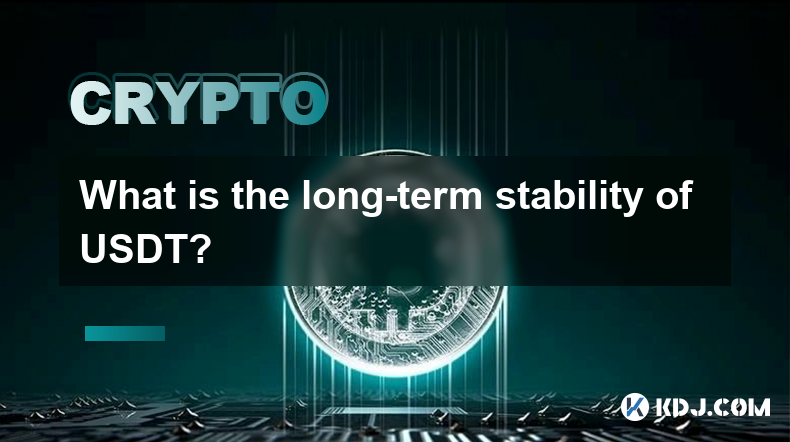
What is the long-term stability of USDT?
Apr 04,2025 at 10:28pm
The long-term stability of USDT, also known as Tether, is a topic of significant interest within the cryptocurrency community. USDT is a type of stablecoin, designed to maintain a stable value by being pegged to a reserve asset, typically the US dollar. The stability of USDT is crucial for its widespread use in trading, as a hedge against volatility, an...
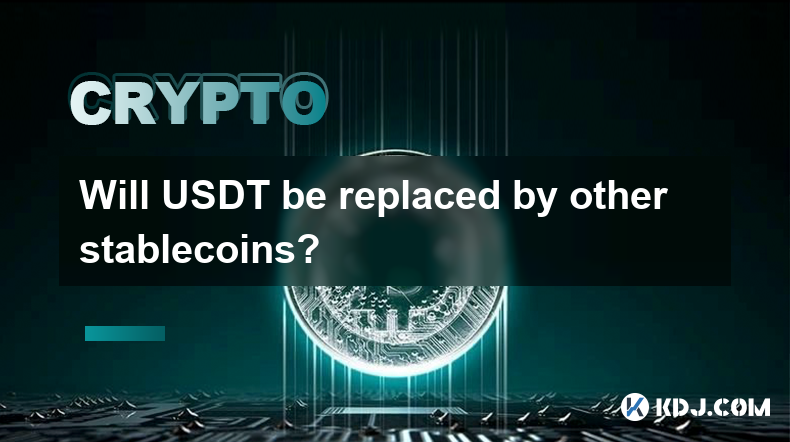
Will USDT be replaced by other stablecoins?
Apr 08,2025 at 06:28pm
The cryptocurrency market has seen a significant rise in the use of stablecoins, with Tether (USDT) being one of the most popular. However, the question of whether USDT will be replaced by other stablecoins is a topic of much debate within the crypto community. To understand this, we need to delve into the factors that could influence the dominance of U...
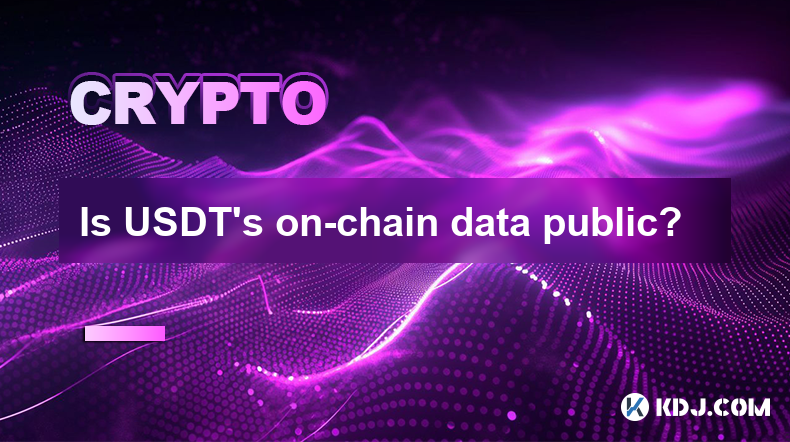
Is USDT's on-chain data public?
Apr 05,2025 at 08:49am
The transparency of USDT's on-chain data is a topic of significant interest within the cryptocurrency community. Tether, the company behind USDT, claims that its operations are transparent and that the on-chain data is publicly accessible. However, understanding the nuances of this data and how to access it can be challenging. This article will delve in...
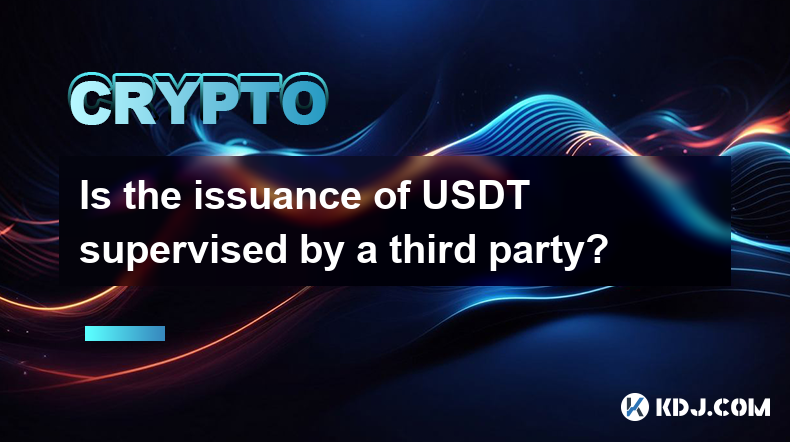
Is the issuance of USDT supervised by a third party?
Apr 06,2025 at 01:49pm
The issuance of USDT, also known as Tether, is a topic that often sparks curiosity and debate within the cryptocurrency community. Many wonder whether this stablecoin, which is pegged to the US dollar, is supervised by a third-party to ensure transparency and accountability. In this article, we will delve into the details of USDT's issuance process and ...
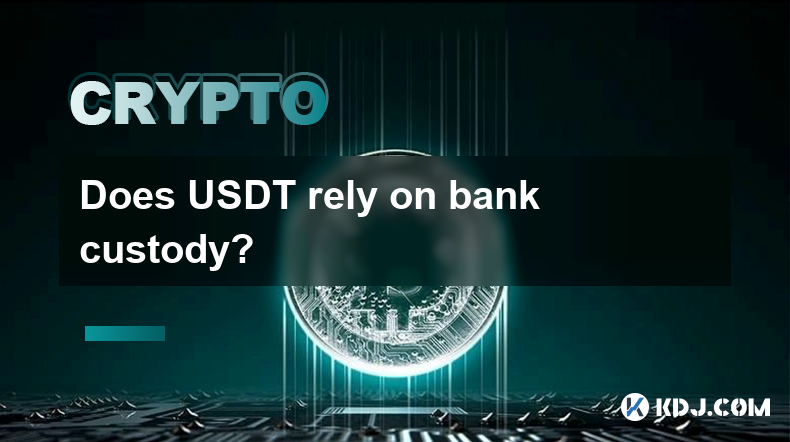
Does USDT rely on bank custody?
Apr 06,2025 at 03:00pm
Tether (USDT) is a widely used stablecoin in the cryptocurrency market, designed to maintain a stable value by pegging it to the US dollar. One of the critical aspects of understanding USDT is its reliance on bank custody. This article will delve into the mechanisms behind USDT's operations, specifically focusing on the role of bank custody in its ecos...
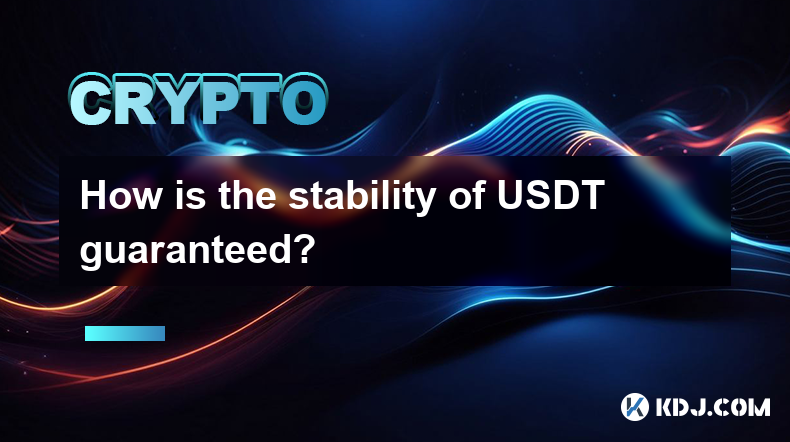
How is the stability of USDT guaranteed?
Apr 03,2025 at 06:00am
The stability of USDT, also known as Tether, is a critical aspect that underpins its role as a stablecoin in the cryptocurrency market. USDT is designed to maintain a 1:1 peg with the US dollar, which is achieved through a combination of mechanisms and practices. Understanding these elements is essential for anyone interested in the stability and reliab...

What is the long-term stability of USDT?
Apr 04,2025 at 10:28pm
The long-term stability of USDT, also known as Tether, is a topic of significant interest within the cryptocurrency community. USDT is a type of stablecoin, designed to maintain a stable value by being pegged to a reserve asset, typically the US dollar. The stability of USDT is crucial for its widespread use in trading, as a hedge against volatility, an...

Will USDT be replaced by other stablecoins?
Apr 08,2025 at 06:28pm
The cryptocurrency market has seen a significant rise in the use of stablecoins, with Tether (USDT) being one of the most popular. However, the question of whether USDT will be replaced by other stablecoins is a topic of much debate within the crypto community. To understand this, we need to delve into the factors that could influence the dominance of U...

Is USDT's on-chain data public?
Apr 05,2025 at 08:49am
The transparency of USDT's on-chain data is a topic of significant interest within the cryptocurrency community. Tether, the company behind USDT, claims that its operations are transparent and that the on-chain data is publicly accessible. However, understanding the nuances of this data and how to access it can be challenging. This article will delve in...

Is the issuance of USDT supervised by a third party?
Apr 06,2025 at 01:49pm
The issuance of USDT, also known as Tether, is a topic that often sparks curiosity and debate within the cryptocurrency community. Many wonder whether this stablecoin, which is pegged to the US dollar, is supervised by a third-party to ensure transparency and accountability. In this article, we will delve into the details of USDT's issuance process and ...

Does USDT rely on bank custody?
Apr 06,2025 at 03:00pm
Tether (USDT) is a widely used stablecoin in the cryptocurrency market, designed to maintain a stable value by pegging it to the US dollar. One of the critical aspects of understanding USDT is its reliance on bank custody. This article will delve into the mechanisms behind USDT's operations, specifically focusing on the role of bank custody in its ecos...

How is the stability of USDT guaranteed?
Apr 03,2025 at 06:00am
The stability of USDT, also known as Tether, is a critical aspect that underpins its role as a stablecoin in the cryptocurrency market. USDT is designed to maintain a 1:1 peg with the US dollar, which is achieved through a combination of mechanisms and practices. Understanding these elements is essential for anyone interested in the stability and reliab...
See all articles























































































